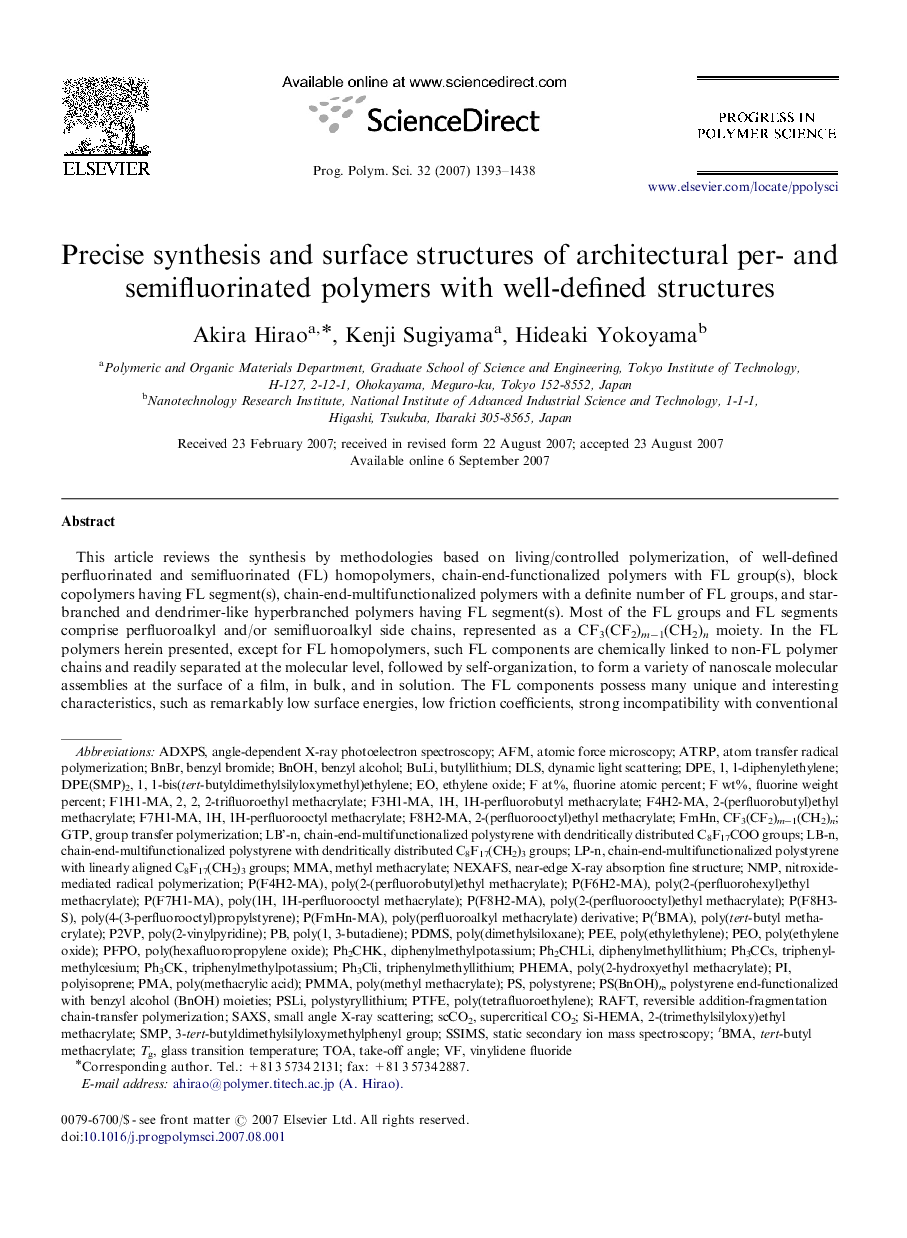| Article ID | Journal | Published Year | Pages | File Type |
|---|---|---|---|---|
| 5209085 | Progress in Polymer Science | 2007 | 46 Pages |
Abstract
This article reviews the synthesis by methodologies based on living/controlled polymerization, of well-defined perfluorinated and semifluorinated (FL) homopolymers, chain-end-functionalized polymers with FL group(s), block copolymers having FL segment(s), chain-end-multifunctionalized polymers with a definite number of FL groups, and star-branched and dendrimer-like hyperbranched polymers having FL segment(s). Most of the FL groups and FL segments comprise perfluoroalkyl and/or semifluoroalkyl side chains, represented as a CF3(CF2)mâ1(CH2)n moiety. In the FL polymers herein presented, except for FL homopolymers, such FL components are chemically linked to non-FL polymer chains and readily separated at the molecular level, followed by self-organization, to form a variety of nanoscale molecular assemblies at the surface of a film, in bulk, and in solution. The FL components possess many unique and interesting characteristics, such as remarkably low surface energies, low friction coefficients, strong incompatibility with conventional hydrocarbon-based polymers, high thermal stability, chemical inertness, and phenyl-free liquid crystalline formation. The surface, solution, and bulk properties of polymer structures including FL units reflect these characteristics of the self-organization of polymers with FL components is of particular interest. Moreover, non-FL polymer chains may enhance the solubility of FL polymers, and render molecular assemblies more changeable in shape, form, and size. Recent reports on these subjects are presented in this review.
Keywords
AFMButyllithiumPolyisopreneTOApHEMANMPMMABuLitBMANEXAFStert-butyl methacrylateATRPSAXSBnBrPTFEscCO2SSIMSDLSPDMSGTPP2VPpolystyryllithiumSupercritical CO2DPEPMAethylene oxidePEEAtom transfer radical polymerizationblock copolymerBenzyl alcoholBenzyl bromideSMPglass transition temperatureRAFTTake-off angleNear-edge X-ray absorption fine structureVinylidene fluorideMMA, Methyl methacrylateatomic force microscopysmall angle X-ray ScatteringDynamic Light Scatteringpoly(2-hydroxyethyl methacrylate)Poly(2-vinylpyridine)Poly(tetrafluoroethylene)poly(tert-butyl methacrylate)poly(dimethylsiloxane)Poly(methacrylic acid)PMMAPoly(methyl methacrylate)poly(ethylene oxide)Star-branched polymerFluorinated polymerGroup transfer polymerizationNitroxide-mediated radical polymerizationPolystyrenePEO
Related Topics
Physical Sciences and Engineering
Chemistry
Organic Chemistry
Authors
Akira Hirao, Kenji Sugiyama, Hideaki Yokoyama,
